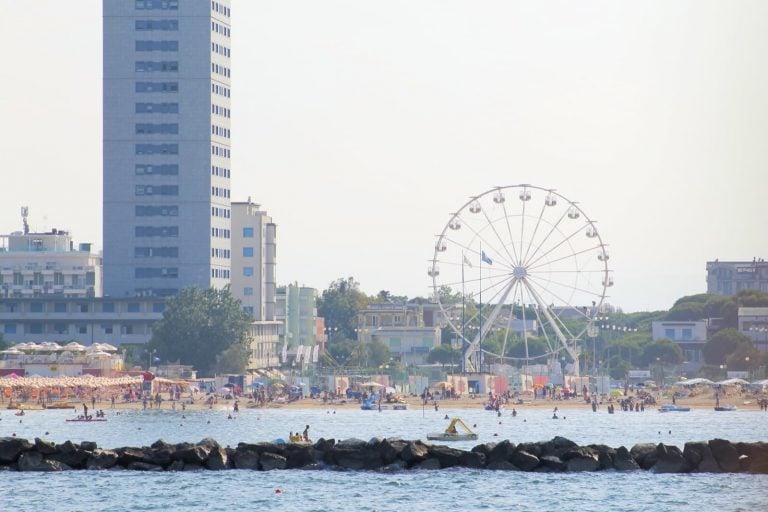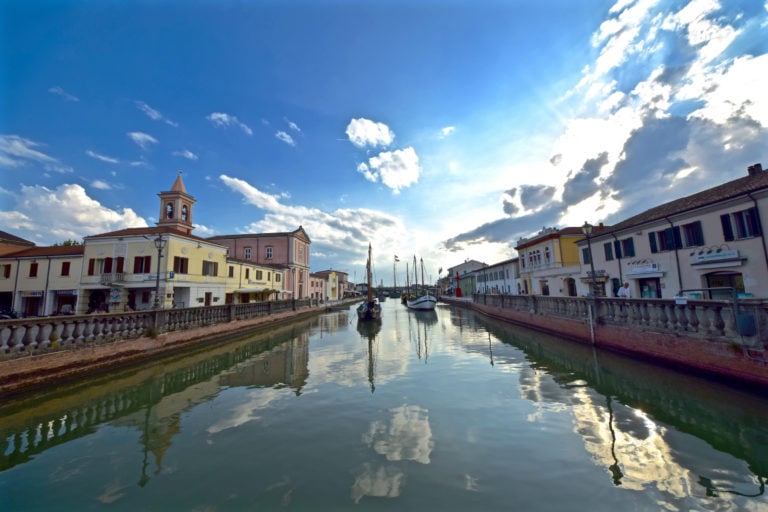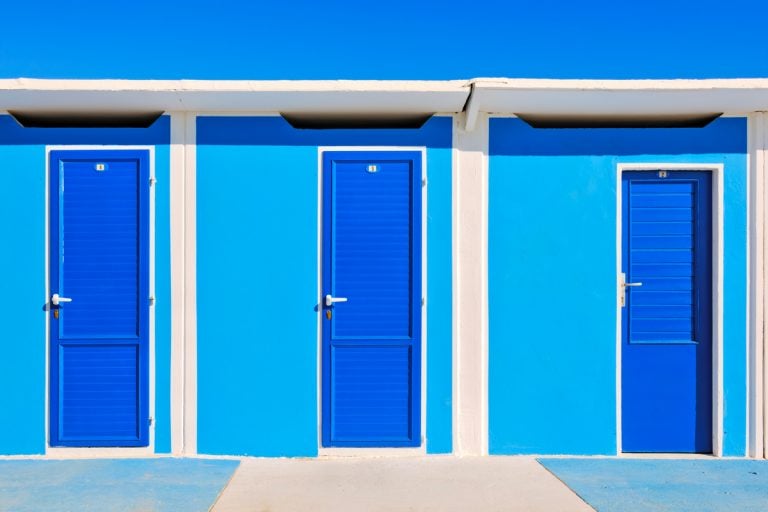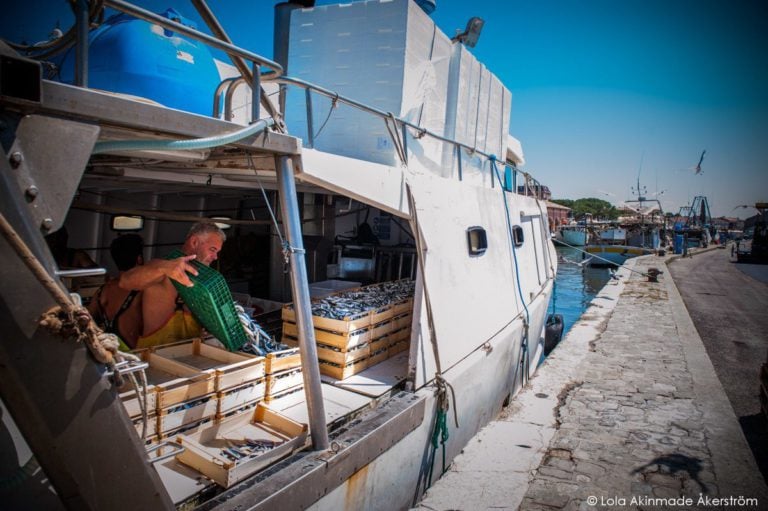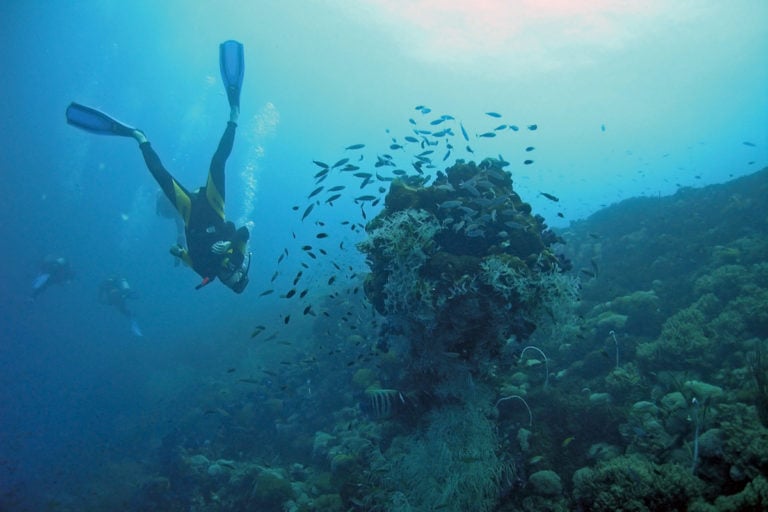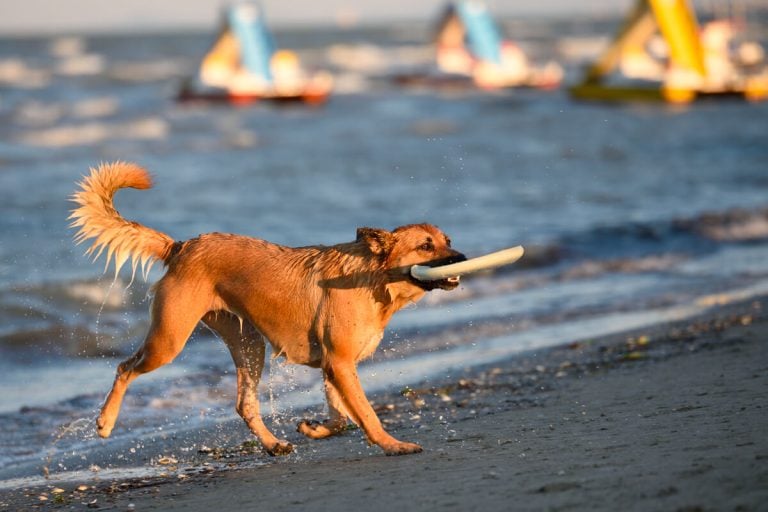Fishing huts (capanni da pesca in Italian) are known by many names depending on the region they are located in: for example, in the Abruzzo region they are called trabocchi.
There are about a thousand of such huts: evocative places rooted in tradition and local identity, telling a tale as old as time and passing on the love of water in all its forms, surrounded as they are by seas, valleys, rivers, lagoons, canals and streams.
Set in a magical, picture-worthy atmosphere with flamingos, salt pans and seaside towns, travellers will find that fishing huts are just beautiful in any season.
Nowhere else is there a landscape with such shapes, colours and lights; one could say that fishing huts are distantly related to lighthouses, the sentinels of the sea par excellence.
No matter whether it’s dusk or dawn, sunny or foggy: watching the nets being lifted is a one-of-a-kind opportunity to catch a glimpse of a bucolic, yet very elegant ritual.
Fishing huts are both a safe haven and the perfect place to socialise through food, tradition and solidarity; here you may even see flocks of birds quickly stealing fish from the nets being lifted by the fishermen…
In the Emilia-Romagna region, fishing huts are a wonderful must-see destination:
- If you are into fishing: have a chat with the so-called capannisti or padellonisti (which is the name given to full-time local fishermen) to learn a few tips and hear some of their stories;
- If you are into birdwatching: in this area, which has the highest bird species richness in Europe, there are greater flamingos, grey and purple herons, great egrets, great cormorants and black-winged stilts;
- If you are into photography: you will find dream locations to photograph and share.
Some adventures are best experienced with friends and family by your side, but remember to be respectful and mindful, just like the flamingos…
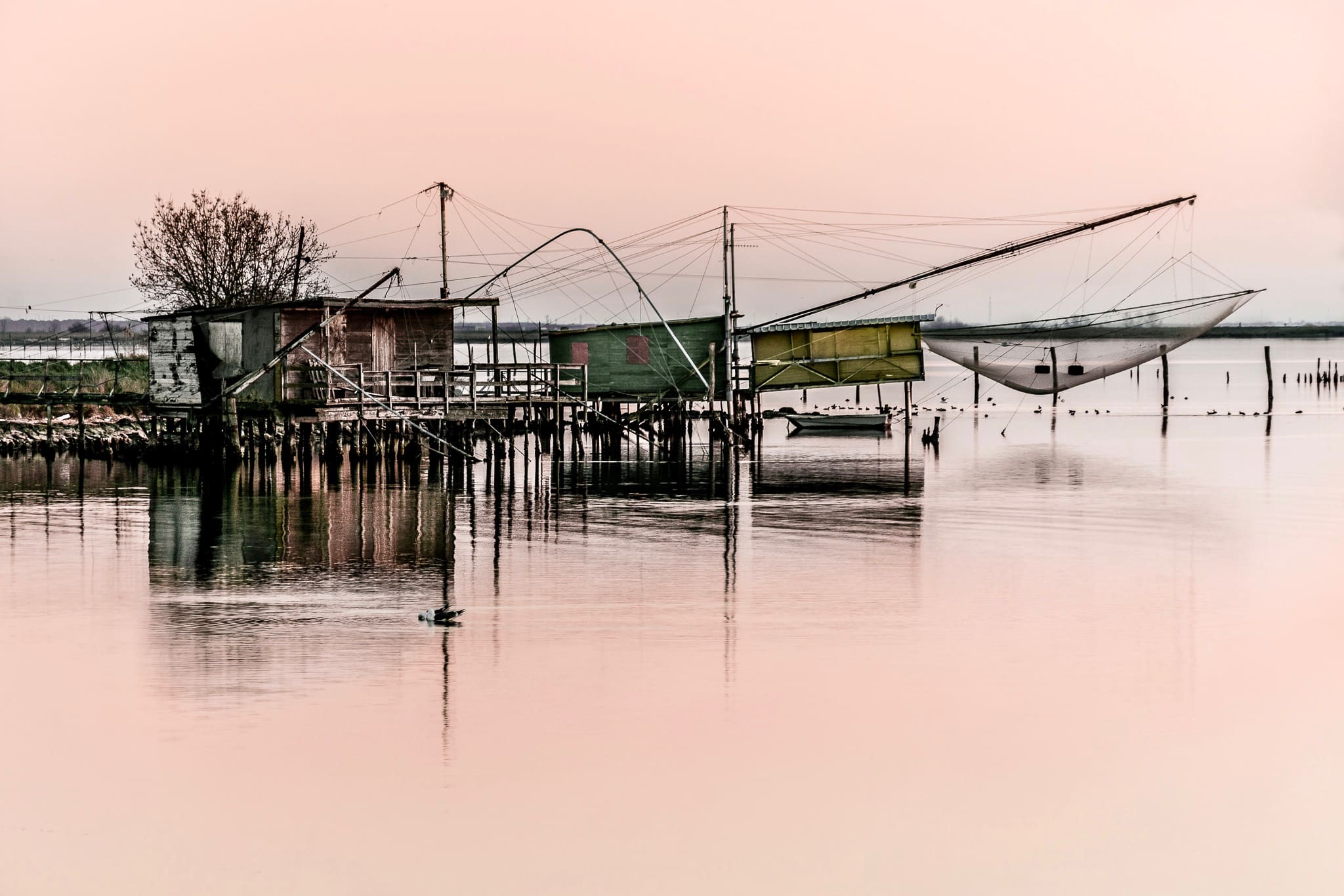
Comacchio Valleys | Ph. Vanni Lazzari
Fishing Huts: what they are, their history and tradition
The fishing huts were built by the people living in the valley, by the river and by the sea: they were a much needed shelter for those who started living off fishing.
Fishing huts were generally built by the poor to meet their own subsistence needs, as can be seen by their location and the materials and techniques used.
Fishermen would need a place where to keep their tools, process the fish or find temporary shelter at night or in case of bad weather, when so required by long distances or fishing times.
With their big nets hanging over the water in the wetlands, these huts have been landmarks in the cultural and natural landscape of the region for centuries, starting from the 15th century, although the first direct evidence dates back to the 19th century.
The fishing hut evolved along with the people inhabiting this area: if at the beginning it mainly was a place to catch and sell fish, then turned into a shelter in times of war, and eventually became a recreational place.
The building materials changed as well, going from reeds to wood to swamp sawgrass to prefabricated and brick buildings.
The name capanno da pesca (fishing hut) refers to their architectural structure, as opposed to some of its synonyms, like bilancione (in Emilia and in the city of Ferrara) or padellone (in Romagna), which actually refer to the fishing equipment used, i.e. giant square nets that are immersed in the water and pulled out periodically (2 to 10 minutes).
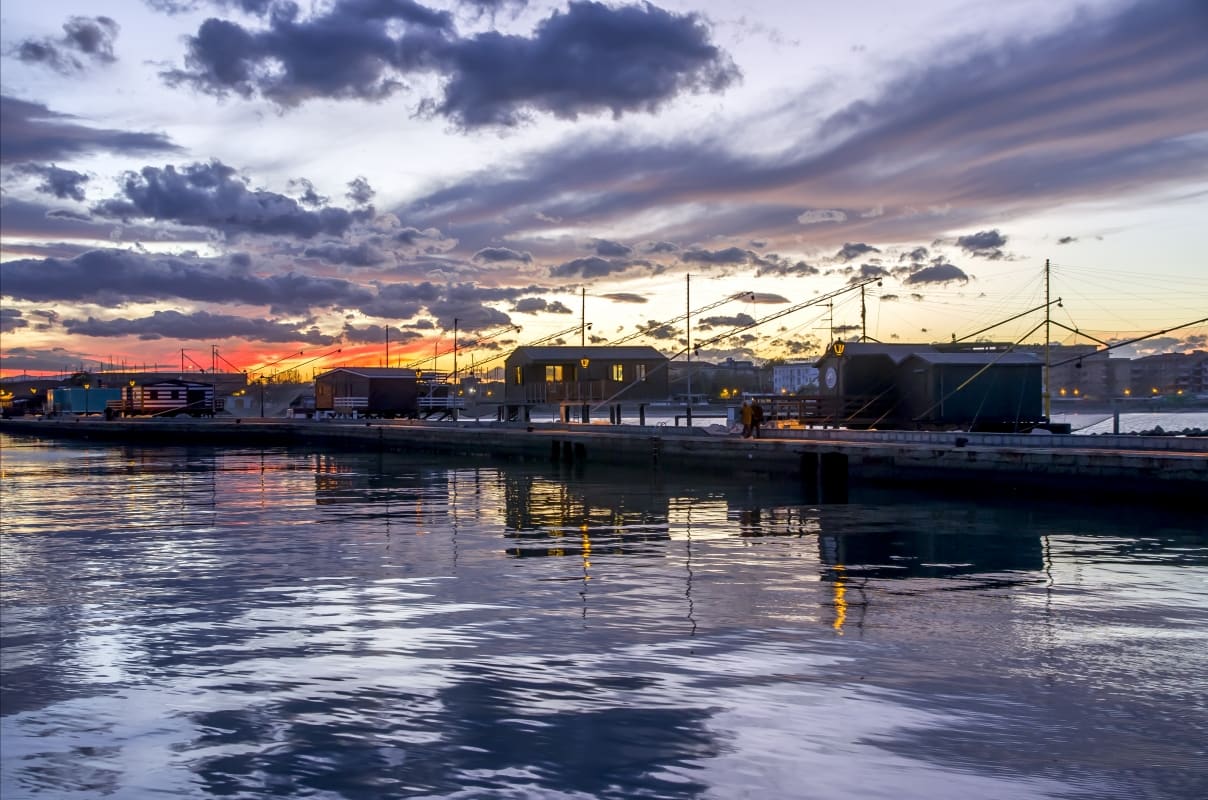
Cesenatico Fishing Huts | Ph. Marco della Pasqua, WLM2014
Types of Fishing Huts
- On land: when they are set on the banks of a canal or on a dock;
- On stilts: when they are right above the water;
- Half over the water and half on land: only part of the fishing hut is on stilts;
- On a barge: when the fishing equipment is on a barge connected to the shore.
Despite not being a fishing hut per se, we also mention the dirlindina, a fishing technique where a lift net is operated from a small water vessel. It is still used in Comacchio.
Although they may differ in size (small: 3 or 4 metres/big: dozens of square metres), they all have two things in common:
- the lifting mechanism, which is usually left in plain sight since it is the pride and joy of the fishermen of the hut. Sometimes they come up with the most creative solutions, for example using engines from old Vespa scooters or Fiat 127 cars;
- the area where fish is cleaned and cooked and people can socialise.
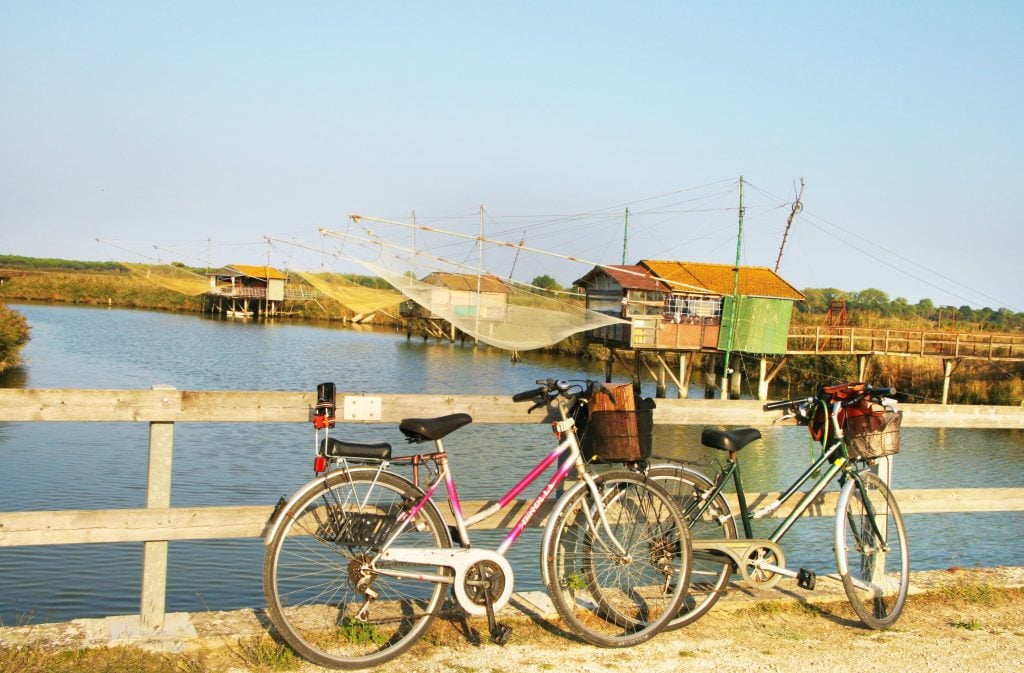
Lido di Dante Fishing Huts | Ph. Ravenna Tourism
How they work
Fishing huts were built out of necessity with no specific set of rules in mind.
Each hut usually has six or seven people using it, one for each day of the week.
If there are only six people, the person working on Saturday must also work on Sunday.
For each hut there is an owner, which means one of the fishermen is appointed as head of the hut.
What is most surprising, though, is that there is no written agreement, just a shake of hands before a group of people.
A sixth or a seventh of the property, usually called a share, may be transferred to one’s children or heirs, with the other members of the fishing hut having pre-emption rights.
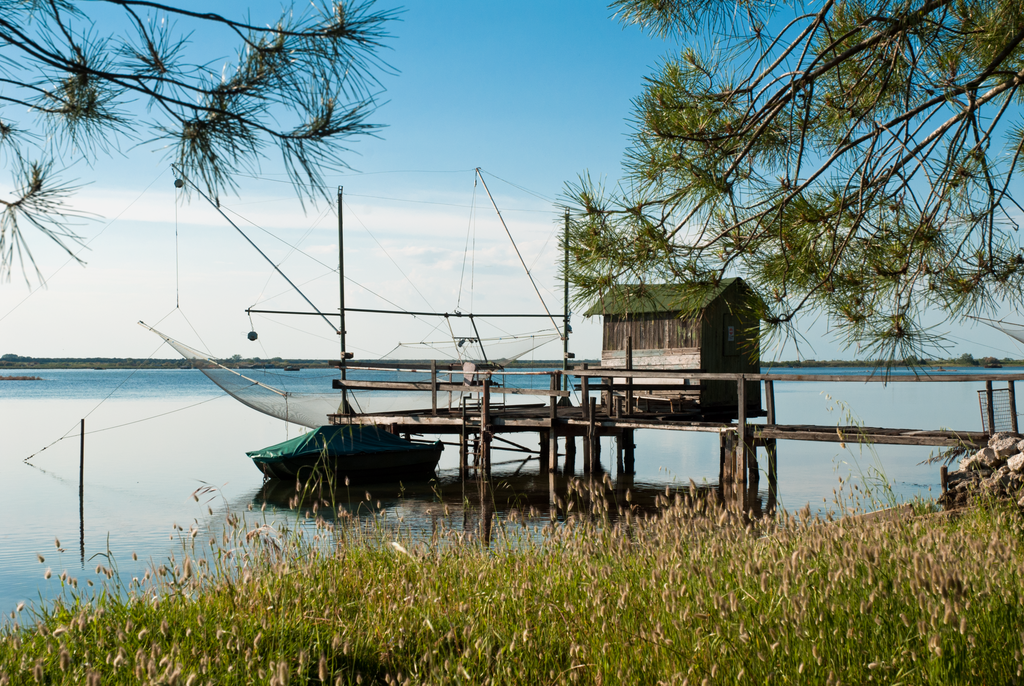
Marina Romea Fishing Huts | Ph. Nicola Strocchi.png
Where to find them
In Emilia, along the wildest areas of the Po (for example the Municipality of Gualtieri), Parma, Enza (in Brescello, where the Enza river meets the Po river), Taro and Crostolo rivers.
In the Po Delta Park, where you can choose between the beautiful landscapes of the Ferrara valleys and the lagoons and pine groves in Ravenna.
In the area of Forlì the best place to see them is Cesenatico, whereas in Rimini you will see their nets jutting out into the sea.
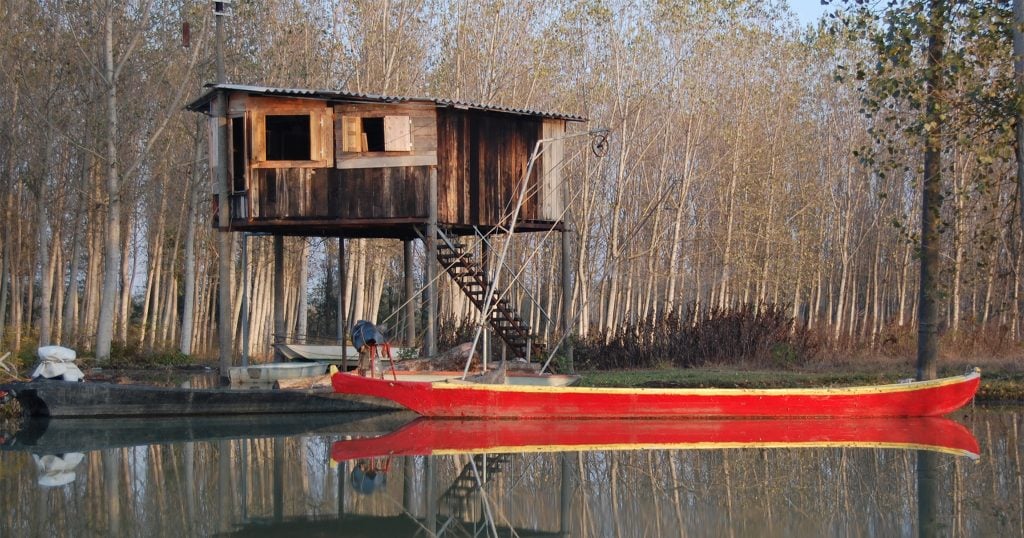
Gualtieri Fishing Huts | Ph. Stefano Zardini
Best time to visit them
- Capanni Aperti – Festival taking place in Ravenna every year in May;
- Capanni Aperti – Festival taking place in Gualtieri every year in September;
- Primavera Slow – 4 weeks of events promoting birdwatching and nature tourism in the Po Delta Park;
- Fiera Internazionale del Birdwatching e del Turismo Naturalistico (International Fair of Birdwatching and Nature Tourism): event for all those who love nature photography, birdwatching, slow and nature-based tourism, sustainability, and biodiversity.
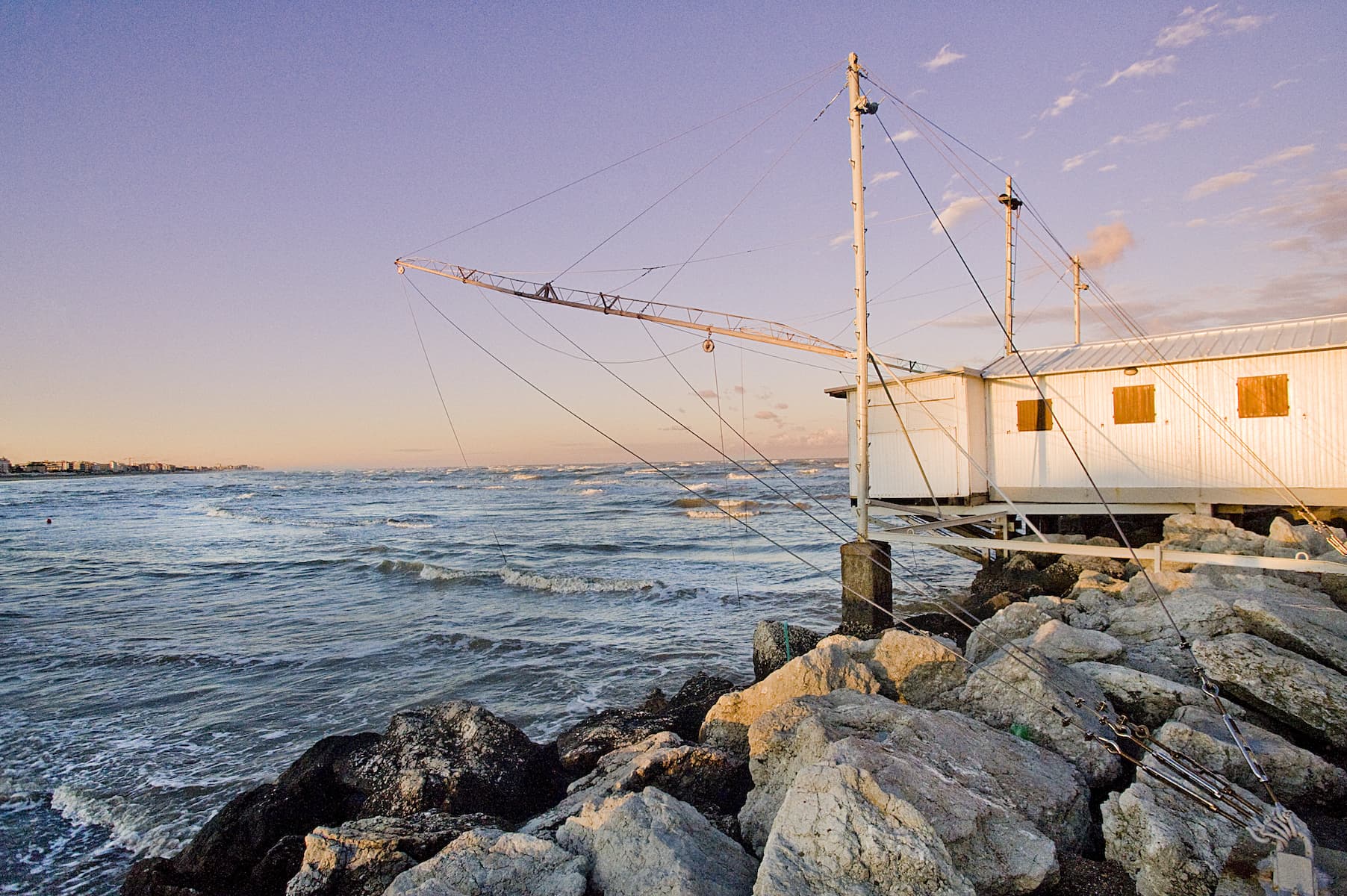
Cervia Fishing Huts | Ph. Simone Manzo
Food and Wine
Once upon a time, there was only one rule in the hut: “us magna cun quel che us ciapa” (“you eat what you catch”): today things may have changed, but fish is still the main ingredient.
Mullets, big-scale sand smelts, eels, sardines, anchovies, shrimps, soles…there are two ways to cook fresh fish to perfection: pan-frying and rustida, the word that locals use for charcoal grilling.
Another dish just as tasty is eel or crab risotto, or the so-called frittata di omini nudi (whitebait omelet).
These are just some of the most authentic Romagna fish recipes that you may taste during the many wine and food events held in these seaside towns.
Remember to spice these dishes up by adding the many medicinal and wild herbs that grow in the small gardens surrounding the huts along the river, or other undergrowth herbs and pine nuts.
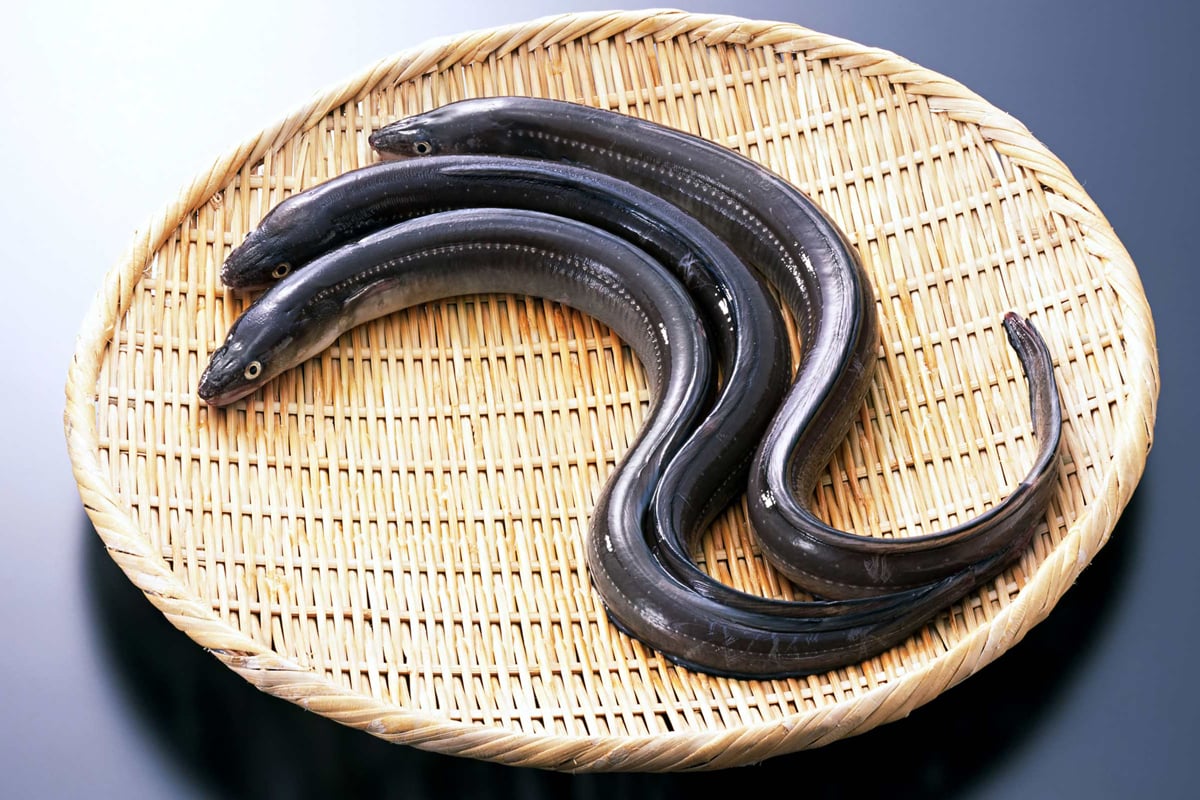
Comacchio Eel
Author
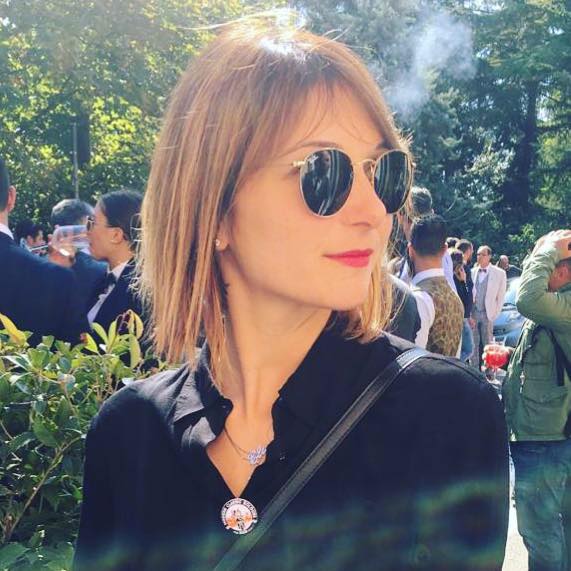
Elisa Mazzini
Social Media Manager for @inEmiliaRomagna and full-time mom.
You may also like
The Coastal Towns of Emilia-Romagna
by Walter Manni /// July 27, 2018

Interested in our newsletter?
Every first of the month, an email (in Italian) with selected contents and upcoming events.
La piattaforma del Paguro: un reef a largo di Ravenna
by Davide Marino /// July 5, 2019
